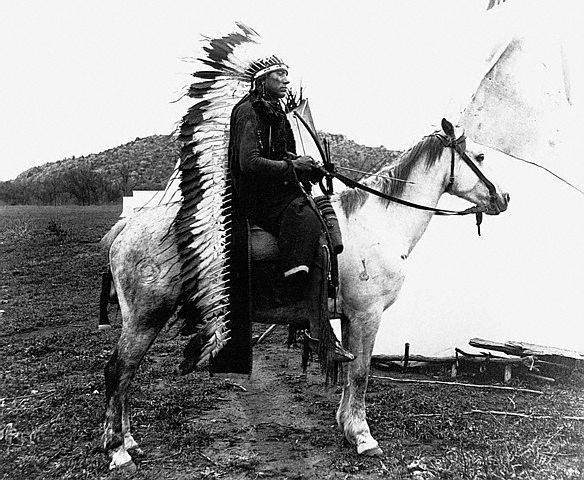

By the 1870s, these illnesses had reduced their population to about 7,000 people. The fierce Comanche continued to maintain their independence and even increase their territory until new diseases, including smallpox and cholera, began to take their toll. Some were killed, but most often, their horses and cattle were stolen. Continuing to protect their territory, the formidable Comanche aggressively attacked the many settlers passing through on their way to the California Gold Rush. Many historians debate whether the Comanche deserve their ferocious reputation, indicating that they were only fighting for retrieval of the land they felt was theirs. Now dominating the Texas Panhandle area, including western Oklahoma and northeastern New Mexico, the Comanche were so well-heeled at their horsemanship that they began to supply horses to French and American traders. In an attempt to stop the raids upon the Apache, the Spanish offered help however, it was to no avail, and the Apache were finally forced out of the Southern Plains by the mid-1800s. There are two accounts of its origin, the most accepted being a Spanish corruption of a name the Ute called them - Kohmahts, meaning “those who are against us.” The second account is that it was a derivative of the Spanish word amino ancho, meaning “wide trail.” They were also called Paducah by early French and American explorers, but the preferred name of the tribe has always been Numunuh, meaning “The People.” The Comanche speak a Uto-Aztecan language, which is almost identical to the Shoshone from which they originated.

Sharing the same language and culture, they sometimes fought between bands and at other times were at peace, cooperating one with the other.Īlthough the name Comanche is well known, it is uncertain where it originated. Though the tribe was large, they never formed a single tribal unit but were divided into eight to twelve independent groups.

From the moment of their capture until their death or release, they were both physically and mentally abused. Unfortunately, the Comanche Indians did not treat their captives well, considering them little more than a slave and a commodity. Long known as war-like and aggressive, some estimates state that up to 20,000 people were kidnapped. Comanche Hunting Buffalo by George Catlin


 0 kommentar(er)
0 kommentar(er)
